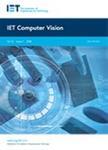版权所有:内蒙古大学图书馆 技术提供:维普资讯• 智图
内蒙古自治区呼和浩特市赛罕区大学西街235号 邮编: 010021

作者机构:Vellore Inst Technol Sch Comp Sci & Engn Vellore Tamil Nadu India SSN Coll Engn Dept Comp Sci & Engn Chennai Tamil Nadu India
出 版 物:《IET COMPUTER VISION》 (IET电脑视觉)
年 卷 期:2018年第12卷第8期
页 面:1088-1095页
核心收录:
学科分类:0808[工学-电气工程] 08[工学] 0812[工学-计算机科学与技术(可授工学、理学学位)]
基 金:Vellore Institute of Technology, Vellore, India SSN College of Engineering, Chennai, India NVIDIA
主 题:biomedical optical imaging image segmentation image classification image filtering object detection skin cancer medical image processing pattern clustering graph theory image colour analysis automatic skin lesion segmentation method dermoscopic images GrabCut segmentation algorithm k-means clustering algorithm skin cancer dermoscopic imaging system lesion region skin lesion detection skin lesion classification visual examination automated skin lesion diagnosis system diagnostic capability enhancement preprocessing step segmentation step filtering techniques colour features ISIC 2017 challenge dataset PH2 dataset
摘 要:Skin cancer is the most common type of cancer in the world and the incidents of skin cancer have been rising over the past decade. Even with a dermoscopic imaging system, which magnifies the lesion region, detecting and classifying skin lesions by visual examination is laborious due to the complex structures of the lesions. This necessitates the need for an automated skin lesion diagnosis system to enhance the diagnostic capability of dermatologists. In this study, the authors propose an automatic skin lesion segmentation method which can be used as a preliminary step for lesion classification. The proposed method comprises two major steps, namely preprocessing and segmentation. In the preprocessing step, noise such as illumination, hair and rulers are removed using filtering techniques and in the segmentation phase, skin lesions are segmented using the GrabCut segmentation algorithm. The k-means clustering algorithm is then used along with the colour features learnt from the training images to improve the boundaries of the segments. To evaluate the authors proposed method, they have used ISIC 2017 challenge dataset and dataset, respectively.